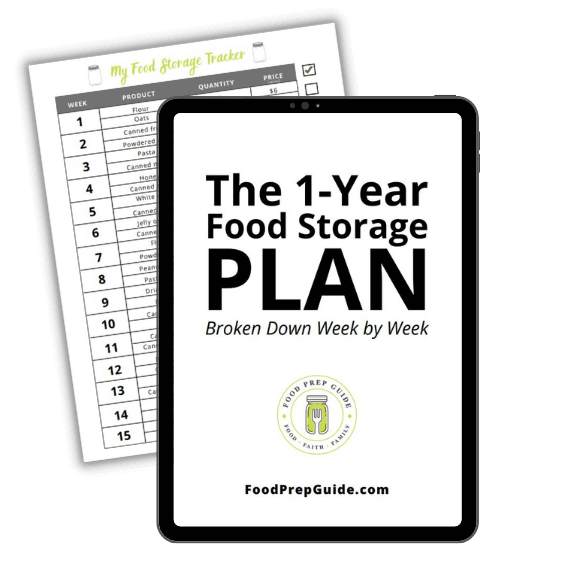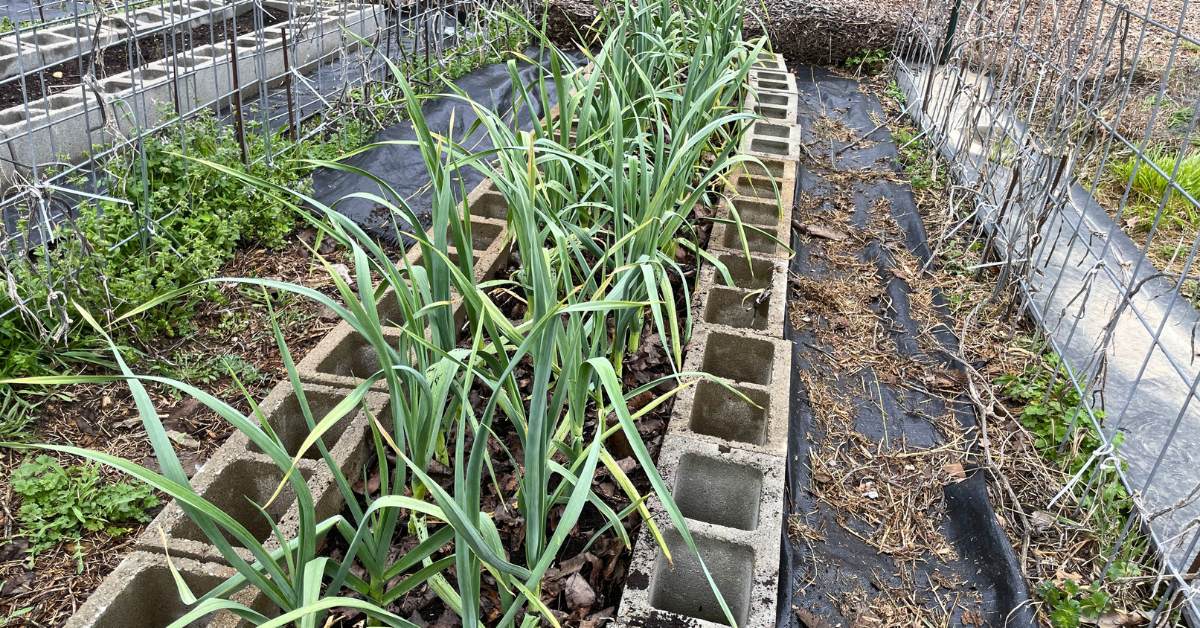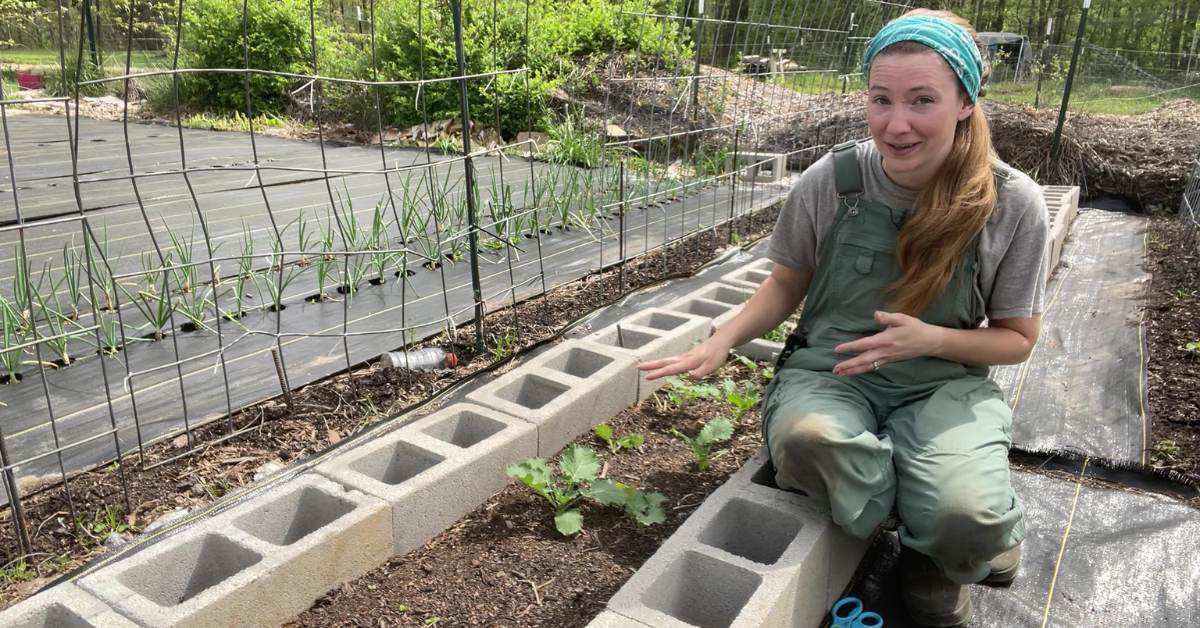Not a fan of that canned potato texture? Dehydrating potatoes may be your answer.
Learning how to dry potatoes gives you a chance to preserve a versatile pantry staple and still enjoy that fresh potato texture and taste.
Types of Potatoes That Are Best for Dehydrating
If you’re wondering what types of potatoes dehydrate best, the official recommendation is to stick with the waxier varieties of potatoes.
These potato varieties include red potatoes, French fingerling potatoes, and Yukon Gold, as well as white and purple potatoes.
However, “best” doesn’t mean “only.”
I frequently dehydrate russet potatoes, and they turn out fine.
Our personal favorite potato for dehydrating is Yukon Gold.
If you have a bunch of baking potatoes on the edge and you want to dehydrate them before they go bad, I say why not go ahead and try?
I don’t think you’ll be disappointed! After all, they’re still potatoes, and it’s pretty tough to be disappointed in a potato, assuming you follow a basic rule or two.
First Rule of Dehydrating Potatoes: Blanching Is a Must
It’s natural to wonder if you have to boil or blanch potatoes first.
I’m all about saving time when and where possible, but blanching is key to dehydrating potatoes without them turning brown.
While I don’t worry as much about the variety of potatoes I’m dehydrating, I never dehydrate them raw.
The thought of brown or—gag—grey potatoes is just way, way, way (did I mention way?) too unappetizing.
To blanch potatoes for dehydration, bring a pot of water to a rolling boil, then add your pre-soaked potato slices, dices, or shreds.
It usually only takes a few minutes to get them fork tender—you don’t want them to be mashable, just soft enough to pierce with a fork.
Prices pulled from the Amazon Product Advertising API on:
Product prices and availability are accurate as of the date/time indicated and are subject to change. Any price and availability information displayed on [relevant Amazon Site(s), as applicable] at the time of purchase will apply to the purchase of this product.
How to Dehydrate Potatoes for Long Term Storage
After blanching, it’s time to start the dehydration process.
Knowing how you’ll use the potatoes once they’re rehydrated will help you decide what form to store them in. You can shred them, slice them, dice them, or even cut them into shoestrings.
Here’s how to dehydrate your potatoes to store them long term and enjoy them in the months, or even years, to come:
Dehydrating Shredded Potatoes for Hash Browns
Probably the easiest way to dehydrate potatoes is in shredded form.
They cook faster, dry more quickly, and take up less room in storage than sliced potatoes.
Hash browns are the best way to use them, but they’re also good for potato pancakes and to add to casseroles and stews.
Here’s how to dry shredded potatoes:
- Shred your potatoes using a box grater (like the one you use for cheese) or a food processor.
- As you shred each potato, move it to a bowl of cold water to soak while you work. This removes excess starch and prevents oxidation (browning).
- When you’re done shredding, rinse the potatoes in a colander and add them to a pot of boiling water for a minute or so.
- Then scoop them out into a strainer and rinse them in cold water to stop the cooking process.
- When you’re ready to dehydrate, spread them out in a single layer onto the dehydrator trays, and set the temperature to 125 degrees Fahrenheit.
- Shredded potatoes usually take about 7+ hours. They should be completely brittle and rock hard when you remove them from the dehydrator.
Prices pulled from the Amazon Product Advertising API on:
Product prices and availability are accurate as of the date/time indicated and are subject to change. Any price and availability information displayed on [relevant Amazon Site(s), as applicable] at the time of purchase will apply to the purchase of this product.
Try your dehydrated shredded potatoes in this Loaded Potato Soup recipe!
Dehydrating Potato Slices
If you’re wondering how to dry sliced potatoes for potato chips, scalloped potatoes, or casseroles, it’s pretty much the same process.
The only difference is you’ll need to lay them out more carefully on the tray, rather than simply spreading them out. Make sure they don’t overlap.
And it will take longer to potato slices dry, possibly 7 hours or more. Test them at the 5-hour mark – they should be brittle and snap in half with no flexibility whatsoever.
That’s how you know they’re ready to store.
Dehydrating Potato Cubes
Like shreds, cubes are also efficient to store since they pack together well. So, if you don’t want to shred your potatoes but have limited storage space, cubing (dicing) your potatoes may be the way to go.
They’re great in stews, soups, potato salad, and casseroles.
Dehydrating cubes of potatoes is very similar to dehydrating other cuts of potatoes.
One tip to follow when working with cubes is to keep them small—about 1/3” or less on each side.
Larger cubes may dry too quickly on the outside before the inside starts to dry. This is called “case hardening.”
If this happens, your potatoes won’t fully dehydrate no matter how long you leave them in. So be sure to cut them small.
Why We Don’t Recommend Dehydrating Potatoes for Mashed Potatoes
When you first heard of dehydrated potatoes, I bet you immediately thought of mashed potato flakes.
Those are the most popular commercial type of dehydrated potatoes. But we don’t recommend dehydrated mashed potatoes at home.
First of all, it’s not as easy as it seems to make dehydrated potato flakes. Secondly, they tend to rehydrate into a dense, sticky ball—not at all like the fluffy instant potatoes you get at the grocery store.
Of course, if you have trouble rehydrating the other cuts of potatoes above, you can always throw them in the blender and call the results “mashed potatoes.”
However, you’ll be getting a gluier version, not exactly what you’d expect when you think of mashed potatoes.
How to Dehydrate Potatoes Without a Dehydrator Using Your Oven
If you don’t have a dehydrator, you’ll need to know how to dehydrate potatoes in the oven. Luckily, it’s simple enough, assuming you don’t mind tying up your oven for a few hours.
Follow the method above, depending on how you’ll be cutting your potatoes.
Then line baking sheets with parchment paper and bake them for 6-9 hours at your oven’s lowest setting. Be sure to prop open the door to release moisture.
It also helps to flip them after a few hours.
How To Store Dehydrated Potatoes
After you’ve dehydrated the potatoes, it’s time to store them.
Here’s how to store your potatoes once they’re dry:
- First, make sure they’re totally dry (rock hard and brittle).
- Then cool them off completely.
- You can store dehydrated potatoes in any type of airtight container, even zipper baggies. However, the better the container and seal, the longer they’ll last. I prefer to use Mason jars. I’ve found you can store several pounds of potatoes in one jar!
- Be sure to condition your potatoes before committing them to long term storage. By condition, I mean shake the jars daily for a week to make sure there’s no residual moisture. If there’s any condensation, put them back in the dehydrator before storing them.
FREE FOOD STORAGE PLAN!

Does gathering and storing a year’s worth of food for your family seem overwhelming and unachievable?
Make it easy with our step-by-step plan. Subscribe to our weekly newsletter & we’ll send it to you FREE!
How to Rehydrate and Use Your Dehydrated Potatoes
When you’re ready to use your potatoes, you’ll basically just add water. Soak them in warm water for 10-30 minutes. You can skip this step if you’re adding them to hot liquid, such as soup or stew.
Check out our in-depth post on 3 ways to rehydrate dried foods.
Since you don’t cook them completely before dehydrating them, you’ll usually need to finish the cooking process when adding them to a dish.
As for how to cook dehydrated potatoes, that depends on how you cut them and how you’ll use them.
For example, if you’re adding cubes to potato salad, you’ll want to finish boiling them until they’re firm but soft enough to cut with a fork. If you’re making hash browns, cook them as you would fresh potatoes once they’re rehydrated.
FAQS
How long do dehydrated potatoes last?
If you use good, airtight containers, such as jars, you can count on your potatoes storing well for at least a year.
Done properly and stored in optimum conditions, they may be good for as long as 5 years. Stored quickly in Ziploc baggies in the kitchen cabinet will still allow you to keep them for several months.
How can you tell if dehydrated potatoes are bad?
The most obvious sign of problems with dehydrated potatoes is mold. Otherwise, go by smell. If there’s an offensive odor, then throw them out.
Can you eat dehydrated potatoes like chips?
Sure, you can eat dehydrated potatoes like chips, but you probably won’t enjoy them like chips!
They look like chips but they’re not—hard and brittle is different than light and crispy.
Instead, rehydrate them, pat them dry, and then air fry or deep fry them for that full potato chip experience.
Do you have to boil potatoes before dehydrating?
While you don’t have to fully cook potatoes in boiling water before dehydrating, you should blanch them. Blanching involves adding potatoes to already boiling water for a minute or two until fork tender.
This will ensure they don’t turn brown or black.
Dehydrating potatoes is fairly simple, and one of my absolute favorite foods to preserve this way.
They’re so useful, versatile, tasty, and filling, and drying them to make sure we always have plenty on hand just makes sense for my family since we use them so often.













What dehydrator do you recommend?
We recommend the Excalibur dehydrator. Mine is 10 years old and still running like new. 🙂
Thank you for all of the information!! It is much appreciated in these scary times!
I make potato flakes all the time. I cook them just like I am going to mashed potatoes only I don’t add anything to them. I then spread them out on parchment paper and put them in my dehydrated. They always come out good. I use them just like you would store bought instant potatoes.
Interesting! I must have done something wrong the first time. You’ve inspired me to try again. Thank you! 🙂
You have to grind them (or mash them into flakes) but they always work for me.
Excellent information. Do you have any thoughts on vacuum sealing the finished potatoes with oxygen absorbers for longer-term storage? Possibly using mylar bags as well.
I vacuum seal them in Mason jars (no O2 absorber) for use in my extended pantry, which gets rotated through within 2 years.
If I were going for longer-term storage, I would seal them in mylar bags with an oxygen absorber.